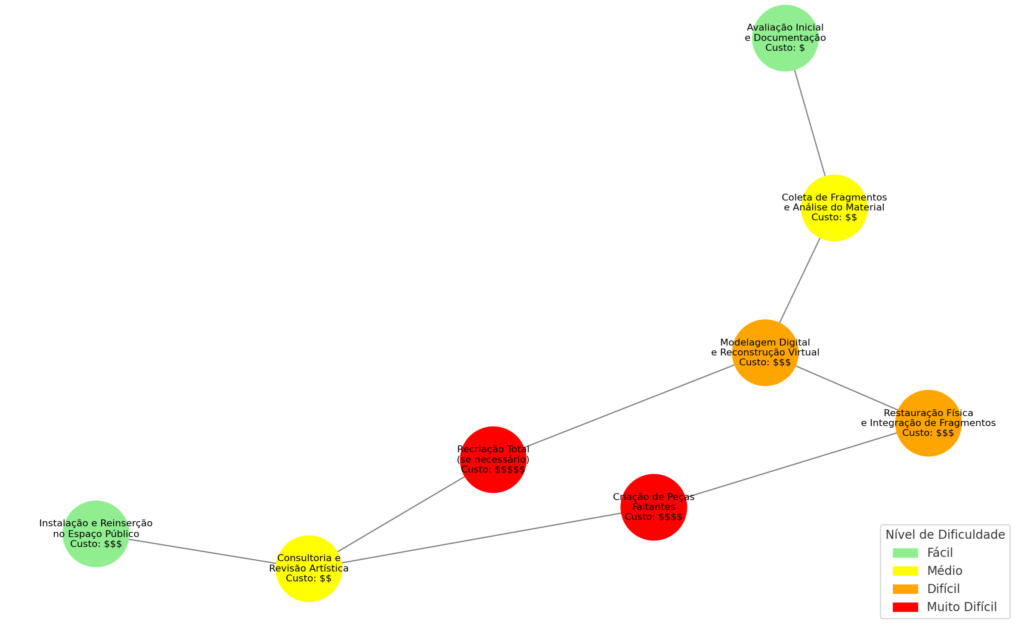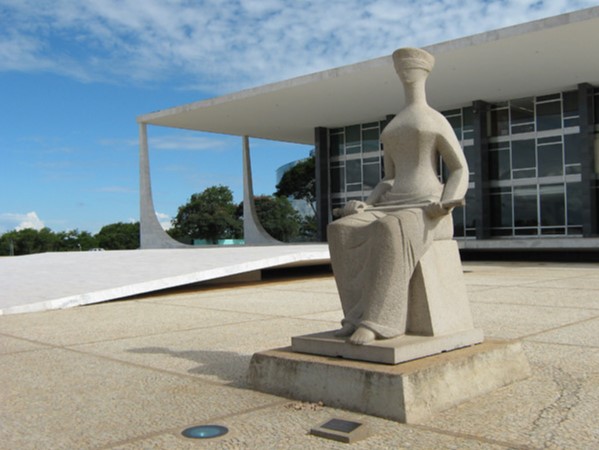In a firm and unwavering stance, with her sword resting calmly on her lap, her bare chest exposed and her eyes blindfolded, the message of Themis is clear: she does not fear Man, nor does she need her weapon to uphold justice.
This image, a witness to Brazil’s political history since the early days of Brasília, is the work of the Italian-Brazilian artist Alfredo Ceschiatti (1918–1989). Before sculpting it, Ceschiatti traveled through Europe in the late 1930s and entered the School of Fine Arts in Rio de Janeiro in 1940. He later became a friend and collaborator of Oscar Niemeyer, creating works that directly “dialogued” with modernist architecture.
Like other artists of Brazilian Modernism, Ceschiatti sought to break away from European classical traditions, promoting a unique cultural identity for Brazil—a country undergoing rapid urban and cultural transformation. The image of Justice, sculpted in granite to last centuries, was conceived as a symbol of integrity and resilience. But perhaps not even the artist imagined that, one day, someone would attempt to blow up his work.
Vandalism Against Justice: Two Acts of Disrespect
In the past two years, the statue has faced two acts of vandalism. The first, on January 8, 2023, was the graffiti of the phrase “You lost, sucker”, referencing a comment by Minister Luís Roberto Barroso. The second, on November 13, 2024, was an attempted bombing with homemade explosives thrown by Francisco Wanderley Luiz at the sculpture and the Federal Supreme Court (STF) building.
These attacks were not only crimes against public and artistic heritage; they were also assaults on the Democratic Rule of Law and acts of terrorism. The sculpture, however, remains intact—a silent but powerful witness to the resilience of justice.
The Importance of Digital Preservation
Fortunately, Justice has “copies” in digital format: 3D models and high-resolution photographic records that ensure her memory is preserved, even in the face of physical destruction. Here, technology reveals its most beautiful side, adding a digital dimension to cultural heritage. Like a spirit that transcends matter, the image of Justice can continue to exist in all its splendor, even after the worst damage.
Between the Humanities and Technology
Still, it is difficult to understand why so many resist the integration of technology and the humanities. Why do we insist on separating the precision of technology from the beauty and depth of the arts? When we finally overcome this psychological barrier, perhaps we can explore the full potential of this collaboration.
If the Justice statue had been destroyed, rebuilding it would be more than cultural resistance. The event would trigger a series of consequences:
- Media Impact: Attacks on monuments receive broad coverage, which can encourage copycats. It is crucial to use the media to emphasize the importance of cultural heritage and publicize the penalties for vandalism. The psychological impact of such attacks can be devastating, as demonstrated by the reinforced protection of the Mona Lisa after successive incidents.
- Symbolic Radicalization: The destruction of a monument highlights its meaning and context. Other works related to the same theme may become potential targets, especially during times of political tension.
- Broken Window Theory: Minor damages left unrepaired may create the impression that rules and authorities are being neglected, encouraging further disrespect. The solution? Immediate restoration and continuous maintenance.
Reconstruction: A Process of Dedication and Innovation
Rebuilding a historical monument is a task that blends art, science, and technology. It begins with damage assessment, the collection of fragments, and documentation. 3D models help plan the restoration, while missing pieces can be sculpted or 3D printed using compatible materials. When necessary, a complete recreation based on historical records restores the monument’s original integrity.

Where Do Generative AIs Come In?
Generative AIs are a valuable tool in this process. They can predict and recreate lost details based on stylistic patterns or symmetry and analyze fragments to determine their position in the whole. This way, technology not only accelerates the restoration process but also ensures accuracy and authenticity. Here, response time is essential—the faster we act, the smaller the negative impact of vandalism.
Justice Endures
Today, Justice remains in place, a firm figure symbolizing timeless values—even in the face of attacks. Her presence, however, invites reflection: why have we reached a point where hatred and radicalism challenge art and memory?
Perhaps the answer lies in the integration of technological innovation and cultural preservation. The future of our history depends on our ability to view them as inseparable allies.
“Blowing up Justice” was never, and will never be, a victory. True strength lies in reconstruction and in our commitment to who we are as a society.










